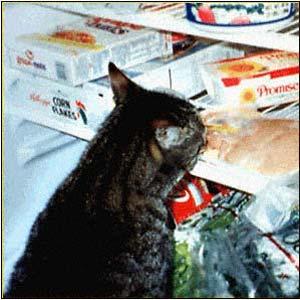
Cats
There are many different types of skin lesions that can occur in the skin of cats. And each lesion or combination of lesions can be caused by multiple diseases and conditions.
Some lesions are a manifestation of a dermatological disease while others are a manifestation of an internal disease. As an example cats may develop ulceration in the mouth and crusting on their feet as a manifestation of liver disease or pancreatic tumor.
In other cases skin lesions are manifestation of an auto-immune disease (e.g. lupus) and life long immunosuppressive treatment is necessary.
Red itchy bumps (papules) may be caused by diseases like bacterial infection (superficial pyoderma), dermatophytosis (ringworm), demodicosis (red mange), scabies (sarcoptiform mange), food allergy, and contact allergy may need to be considered. The history and the distribution of the lesion will help differentiate between these diseases.
Non-healing draining wounds (nodules and draining tracts) may be caused by diseases like deep bacterial infections, fungal infections or neoplasia (cancer) may have to be considered.
Some lesions are primary (caused directly by the disease process) while others are secondary (such as self-inflicted) or are just a manifestation of chronic itchy skin.
Most of skin lesions or sores are secondarily infected with bacteria and it is likely that your cat may require weeks of antibiotic to resolve the secondary bacterial infection.
There are a variety of causes for skin lesions and sores. A thorough physical exam and various diagnostic tests can help determine the cause and direct treatment.
Early diagnosis is very important, thus if your cat has skin sores, seek your veterinarian's help without any delay. Some disease can be treated successfully if caught early but prognosis may become poor in advanced cases.
 Acute Diarrhea in Cats
Acute Diarrhea in Cats
Acute Diarrhea in Cats
Acute Diarrhea in Cats
 Epilepsy in Cats Causes
Epilep
Epilepsy in Cats Causes
Epilep
 Aspergillosis in Cats - Causes, Symptoms and Treatment
Aspergillosis in Cats - Causes, Symptoms and Treatment Asper
Aspergillosis in Cats - Causes, Symptoms and Treatment
Aspergillosis in Cats - Causes, Symptoms and Treatment Asper
 Bald Spots on Cats
Bald Spots on Cats Bald spots are a common occurrence in cat
Bald Spots on Cats
Bald Spots on Cats Bald spots are a common occurrence in cat
 Cat Constipation Home Remedies
While
Cat Constipation Home Remedies
While
Copyright © 2005-2016 Pet Information All Rights Reserved
Contact us: www162date@outlook.com